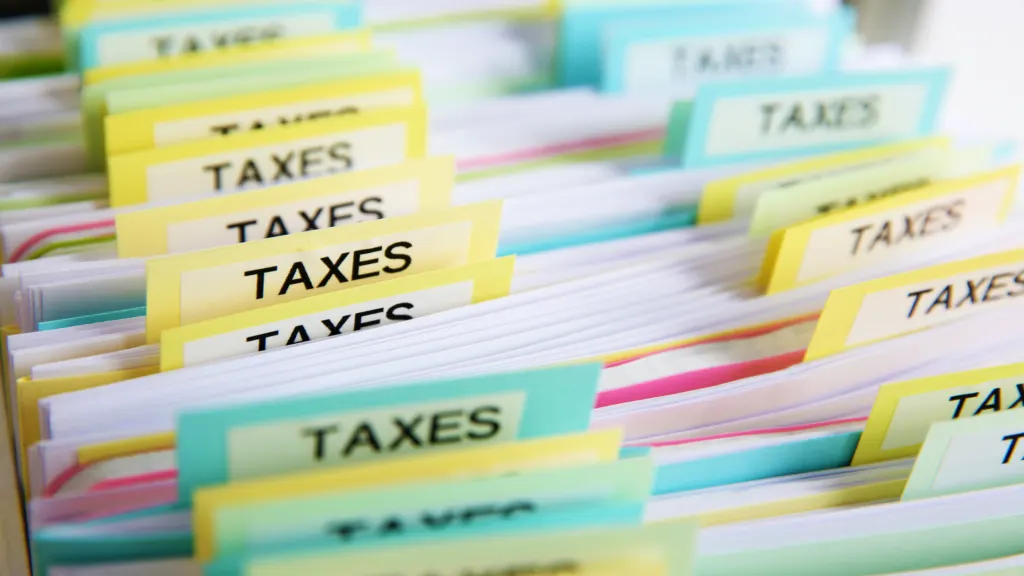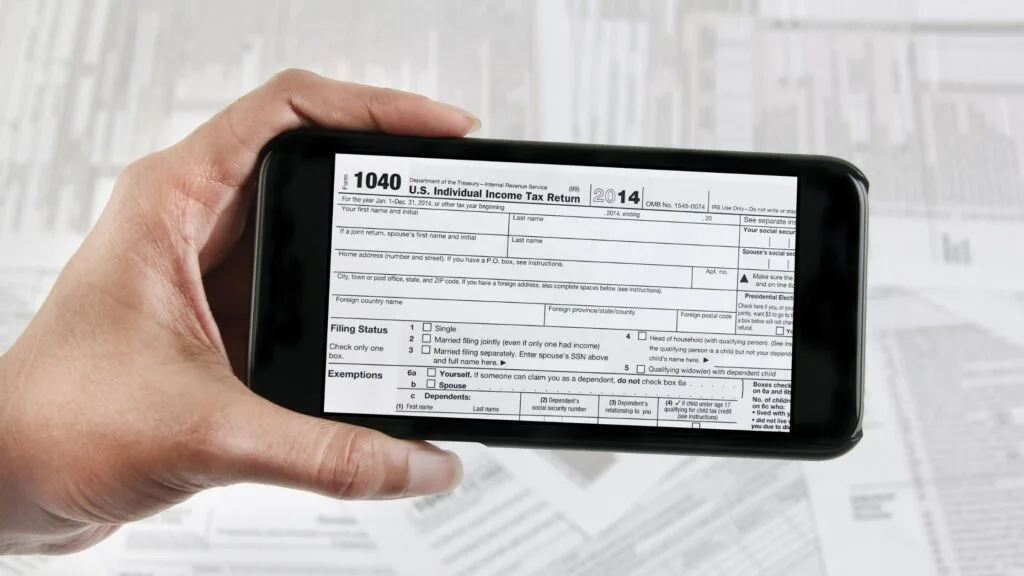If tax season brings you to dread every year, it’s time to get that under control. There is no reason to be stressed, worried, or dreading tax time each year. It’s not good for your mental or physical health to be stressed out.
You probably feel this way because you need to take the time to be organized throughout the year. However, with just a little preparation and a simple system throughout the year, you can regain control of your emotions and make tax time a cinch.
You will need essential components for tax season- receipts of payments (think receipts and paid invoices) and records of payments (think bank and credit card statements). If you have a system for filing and obtaining these items, you’re 90% done with tax prep.
For receipts of payments, you need a file for invoices and receipts you pay throughout the year. This system can be whatever works best for you.

Paper Files
Some people prefer keeping a physical paper trail. You need a physical filing system that works for you for physically paid invoices and receipts.
An accordion-style file folder would work just fine, or a filing cabinet with folders if you tend to have larger volumes.
How you file your receipts and invoices is up to you. There is no wrong system as long as you keep them organized and you know where to find them when you need them.
Standard filing practices include categories by month, vendor name, or expense category.
Shop Paper Filing Systems on Amazon here.

Paper Recording
If you also keep paper records (rather than a software bookkeeping system) you will want a way to track your expenses, so you don’t have to spend hours at tax time adding up the totals.
Whatever you use, at the end of each month, be sure you total the expenses in each category and keep that total handy.
You could even staple the receipts for the said category to the tally paper. You will only need the receipts for an audit, but you will need your totals to calculate your annual expenses at tax filing.

E- files
If you have a software system for bookkeeping, the application often has a mechanism for attaching receipts directly to the payment inside of the program. (i.e. .pdf or .jpeg images can be attached to the payment for easy reference)
If you want to stay high-tech, consider creating digital folders on your computer (or cloud storage) for each category of paperwork. This way, you can store digital copies of your documents in one place and easily access them from any device.
Receipts and paid invoices that have been received can be saved to the file.
Here are four free apps to help you stay organized.
- Mint – Manage money, budgets & track bills from anywhere
- Expensify – Reimburse yourself quickly with auto-tracking tech
- TaxCaster by TurboTax – Simple and easy estimate of your taxes
- FileThis – Easily capture financial documents for quick access

E-Recording
The most accessible form of any electronic bookkeeping system is accounting software, but for those on a budget, there may be other options. You can use a basic spreadsheet in Excel or a similar program to track expenses. We use an excel spreadsheet to keep track of all income and costs for our businesses.
Again, you will need the annual totals for your tax filings, but you may want to track these monthly for easy tax tracking.
For records of payments, you will need a file (as explained above- either e-files or paper files will suffice) to store your bank and credit statements (and ideally, you should attach your reconciliations to each statement) that you will also need at tax time.
Following these easy steps, you can breeze right through tax time, stress free. No matter how complex (or simple) your needs are, there’s always a way to stay organized.
So don’t wait until tax time rolls around – get your paperwork in order now, and you’ll be glad you did! Trust me, it’s worth the effort.
Next Steps
Once you are organized and have all the necessary documents, it’s time to start filing your taxes! Start by gathering all the information you need for the forms you will be submitting. Take advantage of any deductions or credits that apply to you.
Double-check your paperwork and make sure everything is accurate before submission.
Finally, submit your forms and relax knowing you’ve done all the hard work! You can also choose to have an accountant or tax professional help with the filing process if you want extra peace of mind that everything is submitted correctly.
No matter how you decide to file your taxes, it’s important to stay organized throughout the year so tax time can be a breeze!
For the best ways to maximize your tax refund check out this article.
